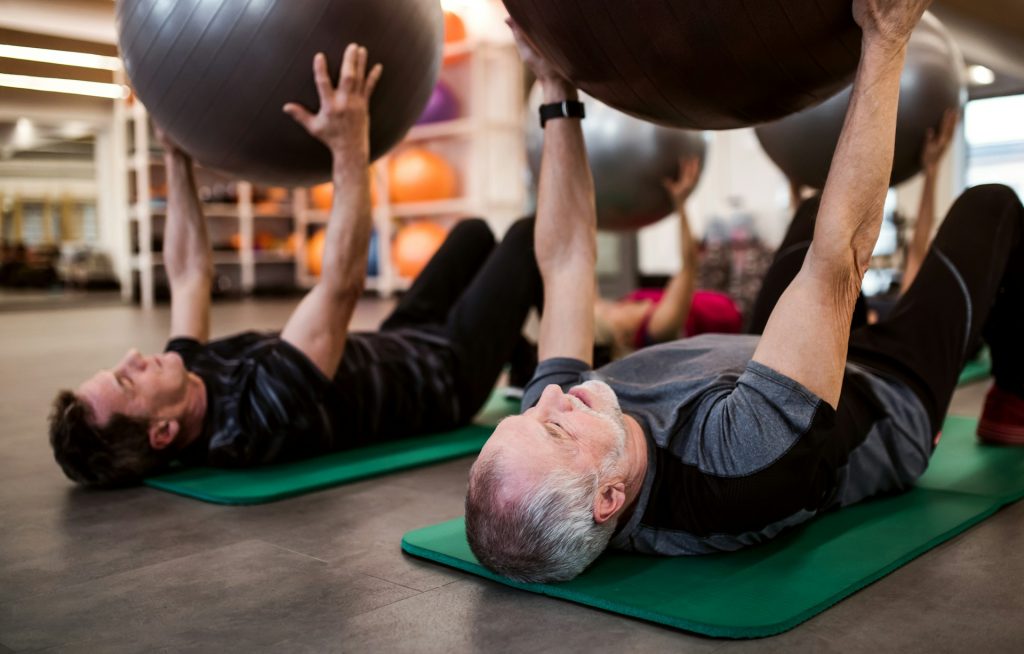Staying active after physical rehabilitation is crucial for seniors to maintain their health and well-being. Moving the body regularly not only helps in retaining strength and flexibility but also improves mood and energy levels. Many seniors think that exercise post-rehabilitation might be too strenuous, but there are plenty of enjoyable and low-impact activities that can make staying active fun and engaging.
Exercise doesn’t have to be a chore. Connecting with others and participating in group activities can turn fitness into a social and enjoyable part of daily life. Whether it’s going for a walk in a nature club or joining a dance class, creating a fitness routine that you enjoy can make all the difference. Sustainable exercise habits are built on activities that are not only beneficial but also enjoyable.
So, how can seniors find exercises that keep them engaged and active? In the following sections, we will explore fun and gentle workouts, social fitness activities, and practical tips for building a lasting fitness routine. These strategies will help make post-rehabilitation fitness a joyful and essential part of a healthy lifestyle.
Benefits of Post-Rehabilitation Fitness
Why Staying Active is Important
Staying active after rehabilitation is vital for keeping the progress made during therapy. Regular movement helps maintain muscle strength, flexibility, and balance. These benefits prevent falls and make daily activities easier and safer. Moreover, exercise boosts blood flow, aiding in the healing of muscles and tissues even after formal rehabilitation ends.
Positive Impacts on Health and Well-Being
Exercise offers many health benefits beyond physical strength. It improves cardiovascular health, helping the heart and lungs function better. Staying active also supports mental health by reducing stress and anxiety. Physical activity releases endorphins, which are natural mood lifters. Seniors who exercise regularly often experience better sleep and heightened energy levels.
Overcoming Common Challenges
Many seniors face challenges when trying to stay active post-rehabilitation. One common issue is fear of injury or setback. To overcome this, focus on low-impact exercises that are gentle on the body. Seek support from friends or join group activities to stay motivated. Establishing a consistent routine can help make exercise a regular part of life, rather than a chore. Consulting with a health coach or exercise professional can also provide tailored advice and encouragement.
Fun Low-Impact Exercises for Seniors
Walking Clubs and Nature Strolls
Walking is a simple yet effective exercise for seniors. Joining a walking club can turn this activity into a social event. Nature strolls offer a peaceful environment to enjoy fresh air and natural beauty while getting exercise. These walks can appeal to those who enjoy being outdoors and exploring local parks or trails.
Gentle Yoga and Stretching Classes
Gentle yoga and stretching classes provide excellent low-impact exercise options. These classes focus on flexibility, balance, and relaxation. Poses and stretches can be modified to suit different fitness levels and mobility limitations. Yoga also includes deep breathing exercises that promote relaxation and mental clarity, making it a holistic workout for mind and body.
Swimming and Water Aerobics
Water-based exercises like swimming and water aerobics are perfect for seniors. The water’s buoyancy reduces stress on joints, making movements smoother and less painful. Swimming laps or participating in water aerobics classes can improve cardiovascular health, muscle tone, and flexibility. These activities are also refreshing and can be a fun way to stay cool while exercising.
Group Activities for Social Engagement
Dance Classes and Social Dances
Dance classes offer a fun way for seniors to stay active and social. These classes range from ballroom to line dancing and cater to different skill levels. Dancing improves cardiovascular health, balance, and coordination. Social dances provide a vibrant community where seniors can meet new people and enjoy shared activities. The rhythmic movements and music make exercising a joyful and engaging experience.
Community Sports and Recreation Leagues
Joining community sports leagues brings seniors together for friendly competition and teamwork. Activities like pickleball, bocce ball, or walking basketball offer low-impact options that promote fitness and camaraderie. Recreation leagues provide structured activities and regular events, making it easy for seniors to stay committed and enjoy physical activity. Participating in these sports fosters a sense of belonging and community spirit.
Fitness Workshops and Meetups
Fitness workshops and meetups provide opportunities for learning and social interaction. These events often focus on specific exercises, wellness topics, or health tips tailored for seniors. Workshops can include anything from balance training to nutrition advice, making them a valuable resource. Meeting others with similar interests at these events creates a supportive network that encourages a healthy lifestyle.
Creating a Sustainable Fitness Routine
Setting Realistic and Achievable Goals
Setting goals is essential for creating a sustainable fitness routine. Start with small, realistic goals that are easy to achieve. For example, aim to walk for 10 minutes daily and gradually increase the time. Specific and attainable goals help build confidence and maintain motivation. Write down these goals and revisit them regularly to track progress and make adjustments as needed.
Tracking Progress and Staying Motivated
Keeping track of your progress is crucial for staying motivated. Use a journal or a mobile app to log your activities and note how you feel after each session. Celebrate milestones, no matter how small, to recognize achievements and boost morale. Rewarding yourself for consistency can also add extra motivation. Share your progress with friends or family to gain encouragement and support.
Tips for Making Exercise a Daily Habit
Making exercise a daily habit requires consistency and enjoyment. Find activities that you love to do, as this increases the likelihood of sticking with them. Schedule your workouts at the same time each day to build a routine. Pairing exercise with another daily activity, like listening to music or a podcast, can also make it more enjoyable. Ensuring your fitness routine fits seamlessly into your lifestyle helps make it a lasting habit.
Conclusion
Embracing fitness after rehabilitation offers seniors numerous benefits for their physical and emotional well-being. Engaging in fun, low-impact exercises, participating in social group activities, and creating a sustainable fitness routine are key to maintaining a healthy and active lifestyle. These approaches make exercise enjoyable and integrate it seamlessly into daily life.
Take the first step toward a more active and fulfilling life with Eightlimfit. Our specialized rehabilitation programs in Phoenix and Scottsdale are designed to meet the unique needs of seniors, providing support and guidance every step of the way. Join our community and discover the joy of fitness tailored just for you.

